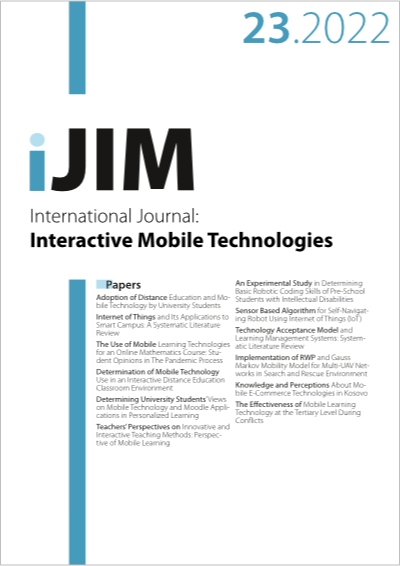Internet of Things and Its Applications to Smart Campus: A Systematic Literature Review
DOI:
https://doi.org/10.3991/ijim.v16i23.36215Keywords:
Smart campus, Smart university, Internet of Things, IoT applications, Big dataAbstract
A smart campus is an emerging trend that will revolutionize the education system by enabling universities to improve services, and processes as well as achieve sustainability goals. With the proliferation of advanced technologies, a smart campus has emerged as an important concept that integrates technology into higher education. A smart campus takes advantage of IoT technologies to facilitate teaching and research activities. The purpose of this study is to identify the IoT technologies that are required in the development of a smart campus. This study uses a Systematic Literature Review (SLR) methodology and PRISMA processes to analyze high-quality articles on the IoT-based smart campuses from the last five years (2017-2022) as extracted from three databases like Scopus, ScienceDirect, and IEEE. The findings of the study reveal that the implementation of an IoT-based smart campus offers many advantages and benefits but also presents challenges requiring further exploration. Because of the chosen research approach, the research results may lack generalizability. Therefore, researchers are encouraged to test the proposed propositions further. The paper explores the many benefits and advantages that are brought by the implementation of IoT-based smart campuses. It also identifies key challenges that are presented by such implementations. Researchers, policymakers, teachers, and students can benefit from this study by gaining insights into the IoT-based smart campus.
Keywords—smart campus, smart university, Internet of Things, IoT applications, big data
Downloads
Published
How to Cite
Issue
Section
License
Copyright (c) 2022 Nadire Cavus, Seipati Elizabeth Mrwebi , Imran Ibrahim, Temiloluwa Modupeola, Albert Y. Reeves

This work is licensed under a Creative Commons Attribution 4.0 International License.



